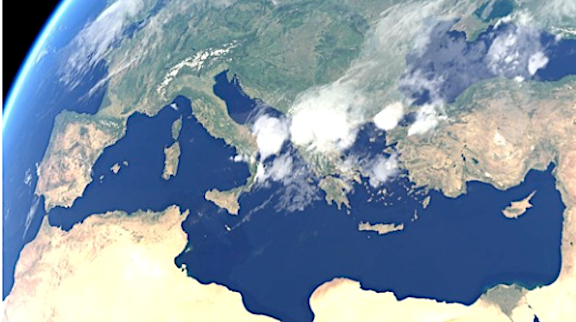
Anticipation is great for the soon-to-be-released two next-generation meteorological satellite systems that will bring weather forecasting accuracy and climate monitoring into a new era, according to the head of Europe’s meteorological satellite agency. The first of the MTG and EPS-SG satellites are scheduled for launch in late 2021 and late 2022 respectively.

Alain Ratier, Director-General
EUMETSAT Director-General Alain Ratier said that these are the most complex and innovative meteorological satellite systems ever built. Having these two systems coming on stream together is a rare, challenging, and exciting time for EUMETSAT.
Continuing Ratier said the organization's two next-generation meteorological satellite systems, Meteosat Third Generation (MTG) and EUMETSAT Polar System – Second Generation (EPS-SG), will help forecasters and climate scientists meet some of their biggest current challenges.
Representatives from the meteorological and hydrological services in EUMETSAT’s 30 Member States and northern Africa are meeting at the organization's Darmstadt headquarters this week to discuss preparations for the use of data from the new satellite systems.
Deutscher Wetterdienst (DWD) Director of Forecasting Hans-Joachim Koppert said that representatives from national meteorological and hydrological services around Europe and beyond are preparing now for this new era. These satellite systems will enable the NMHS to bring more benefits to citizens in their countries, helping to save lives, property and industries and bringing about a positive economic impact.

Satellite image of a damaging storm over Europe on July 10, 2019.
Additionally, one of the main challenges facing meteorologists is the rapid detection and forecasting of severe weather events, so that timely warnings can be given to citizenry, civil authorities and first responders. MTG data will be provided to meteorological services such as the DWD faster and in higher resolution than is currently possible, to give just one example of how the next generation systems will help them meet this challenge.
Met Office Head of Satellite Data Products and Systems Dr. Simon Keogh said the MTG mission had massive potential to improve weather and climate services. They intend to leverage MTG data to enhance their forecasting capability and to extend into the future their ability to monitor changes to their environment.
Natasa Strelec Mahovic from the Croatian Meteorological and Hydrological Service (DHMZ) said new and next-generation instruments on the EPS-SG satellites will be the main source of data for complex computer modeling of the weather for forecasts from 12 hours to 10 days in advance. Mahovic continued saying that their experts are eager to work with the new and higher-quality data and to explore the new possibilities from assimilating the data from the new and next-generation instruments on EPS-SG.
Both systems will make significant contributions to monitoring climate change, adding to existing knowledge gained from EUMETSAT’s more than 40 years’ of satellite observations and creating new series of climate data records.
About MTG
- When fully deployed, the MTG spacecraft constellation will consist of three satellites – two imagers and one sounder – in a geostationary orbit 36,000km above the Earth
- The MTG system will make it possible, for the first time, to observe from space the full lifecycle of a convective storm, from before clouds begin to form through to detection of lightning strikes
- Images of Europe will be produced every 2½ minutes and of Europe and Africa (the full disc) every 10 minutes
- The Lightning Imager instrument will continuously observe lightning over the fully disc, between clouds and from clouds to the ground, contributing to aviation safety
- The Infrared Sounder instrument will detect instability in the atmosphere, before clouds have formed
- The Copernicus Sentinel-4 sounding mission will observe air quality over Europe
About EPS-SG
- The EPS-SG constellation will consist of two types of Metop-Second Generation satellites flying in a low-Earth orbit.
- These satellites will provide new and better data for complex computer modeling of the weather
- The satellites’ payloads include next-generation instruments of those currently on board EUMETSAT’s Metop satellites and three new instruments, two of which are making their world premiere
- The Copernicus Sentinel-5 instrument carried on Metop-SG A will measure trace gases in synergy with other instruments in support of global air quality monitoring
- The EPS-SG data will serve a very wide range of applications including hydrology, oceanography, agriculture, climate monitoring and even space weather monitoring.

